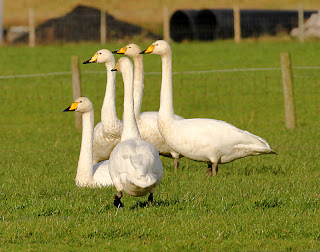Worry not blog followers, Another Bird Blog is alive and well but taking a winter migratory break in a warm, sunny location. Sue and I decided to grab a few weeks in Lanzarote, an island situated just 79 miles off the coast of Africa and the most easterly of the Canary Islands. The island is 37 miles (60km) long and 12 miles (20 km) wide, making it the fourth largest island in the Canaries.

The island enjoys a mild dry climate (hooray!) with average daytime temperatures ranging in January from about 21°C to 29°C - its 22°C today. With the coastline of Morocco only 100 kilometres to the east, Lanzarote is a regular port of call for many birds migrating to breeding grounds in the north, or returning to their southern winter locations in Africa. Waders and small passerines use the wetlands of the Al Janubio salt pans or the abandoned salt works beneath the high cliffs of Famara to rest and feed on their long journeys.
On Lanzarote the Houbara Bustard nests regularly in the sandy scrubland of the Monumento Natural de Los Ajaches– the oldest volcanic formation of the Canary Islands. An estimated three or four pairs of Barbary Falcons are resident in the Timanfaya National Park, breeding in the craters of the Montañas del Fuego and preying on rabbits, partridge and other small birds and animals which live in the harsh terrain of the volcanic lava flows.
Birds are not in abundance in Lanzarote and I am working hard to see a few, but it’s great to be out in the sun and hear of the rain and cold at home. There are a few Hoopoes about and hopefully I will have a few more bird pictures to post on return to the UK. Southern Grey Shrikes are common here, with 3 just near the hotel yesterday. I was on the sunbed Sunday and a Berthelot’s Pipit came trotting by, today's highlight proved to be a flock of 50 Lesser Short-toed Larks.
Maybe I’ll catch up with Houbara Bustard soon.



























































